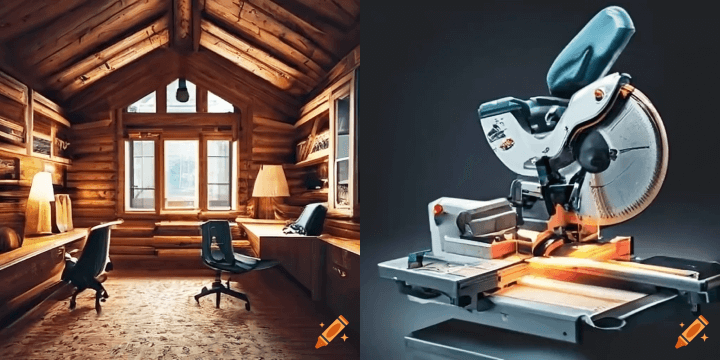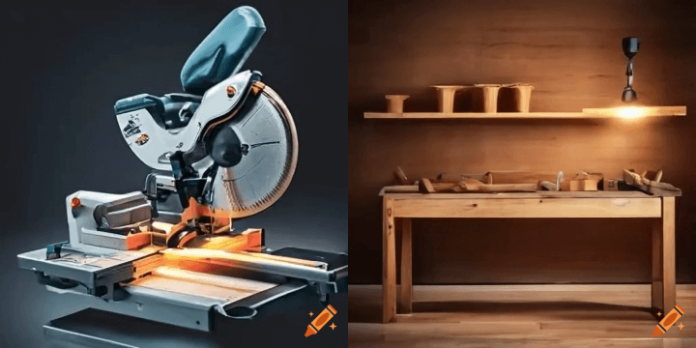A table saw is a versatile and powerful tool that can significantly enhance your woodworking capabilities. Whether you’re a seasoned craftsman or a novice looking to embark on DIY projects, understanding how to buy and use a table saw is essential. In this comprehensive guide, we’ll explore the key factors to consider when purchasing a table saw and provide valuable insights into its proper usage.
Choosing the Right Table Saw:
Types of Table Saws:
Table saws come in various types, each designed for specific applications. The three primary types are benchtop, contractor, and cabinet table saws. Benchtop saws are compact and portable, contractor saws are versatile and suitable for job sites, while cabinet saws offer precision and power for professional woodworkers. Consider your needs and workspace when selecting the type that best suits you.
Motor Power:
The motor power of a table saw is a crucial factor in determining its cutting capabilities. Higher horsepower allows for more efficient cutting, especially through dense or thick materials. Consider the types of projects you plan to undertake and choose a motor power that aligns with your requirements.
Blade Size and Types:
The size and type of the blade significantly impact the versatility of a table saw. Standard blade sizes range from 8 to 12 inches, with larger blades offering deeper cuts. Different blades are designed for specific materials, such as rip blades for cutting along the grain and crosscut blades for cutting across the grain. Choose a blade size and type that suits your intended applications.
Setting Up and Using a Table Saw:
Safety First:
Before diving into any woodworking project with a table saw, prioritize safety. Wear appropriate personal protective equipment (PPE), including safety glasses and hearing protection. Familiarize yourself with the saw’s safety features, such as the blade guard and anti-kickback pawls.
Proper Blade Height and Alignment:
Adjust the height of the saw blade according to the thickness of the material you’re working with. Ensure the blade is parallel to the miter slots and fence to guarantee accurate and safe cuts. Regularly check and adjust blade alignment to maintain precision.
Using the Fence and Miter Gauge:
The fence and miter gauge are essential components for achieving accurate and straight cuts. Adjust the fence parallel to the blade for rip cuts, and use the miter gauge for crosscuts or angled cuts. Familiarize yourself with these tools to ensure precise and repeatable results.
Understanding Different Cuts:
Table saws are incredibly versatile and can perform various cuts, including rip cuts, cross cuts, miter cuts, and dado cuts. Learn the proper techniques for each type of cut, and practice on scrap wood before tackling your actual project.
Push Sticks and Featherboards:
To maintain a safe distance from the blade, use push sticks and weatherboards. Push sticks allow you to guide the material through the cut without risking your hands, while weatherboards help maintain consistent pressure against the fence and table, preventing kickback.
Dust Collection:
Table saws generate a significant amount of sawdust, and proper dust collection is essential for a clean and safe workspace. Invest in a dust collection system or connect the saw to a shop vacuum to minimize dust buildup.
Maintenance and Care:

Regular Blade Maintenance:
Keep your table saw in optimal condition by regularly inspecting and cleaning the blade. Remove resin and pitch buildup using specialized blade cleaning solutions, and sharpen the blade as needed for clean and efficient cuts.
Lubrication and Alignment:
Lubricate moving parts, such as the trunnions and arbor, to ensure smooth operation. Regularly check and realign the blade, fence, and miter gauge to maintain accuracy.
Conclusion:
Acquiring and using a table saw is a valuable skill for any woodworking enthusiast. By carefully choosing the right table saw for your needs and mastering its usage through safe and precise techniques, you can elevate the quality of your woodworking projects. Remember to prioritize safety, invest in quality equipment, and practice your skills to achieve professional-level results with this versatile tool.



